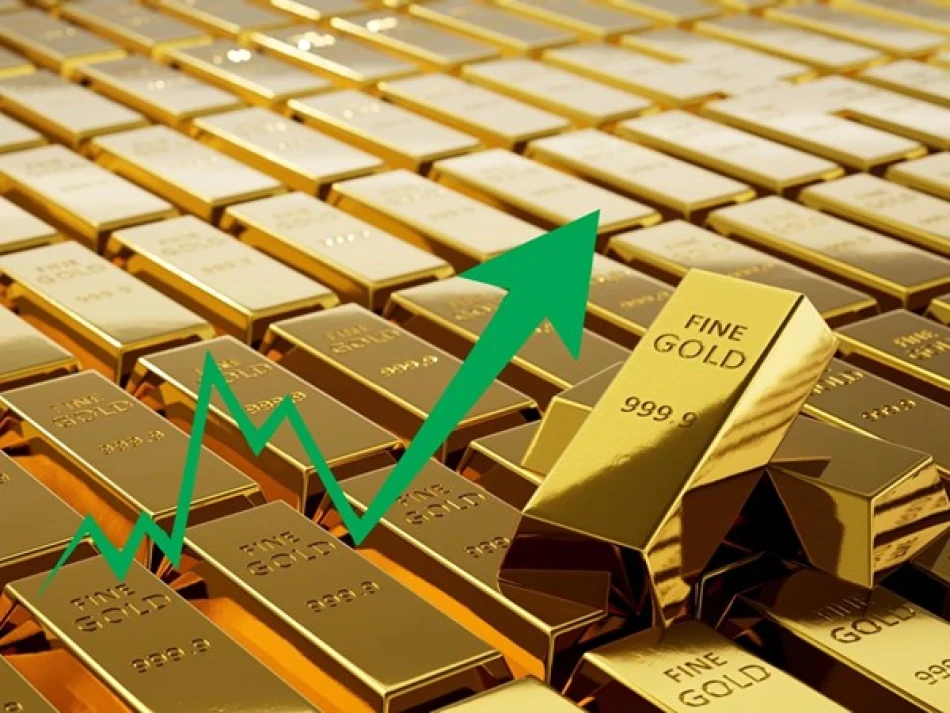
Gold Rebounds from One-Month Low, Sparking Renewed Investor Interest
Gold Rebounds as Trade War Fears Eclipse Federal Reserve's Hawkish Stance
Gold prices recovered Thursday from their lowest point in over a month, as uncertainty surrounding new U.S. tariff threats drove investors back to the traditional safe haven. The rebound highlights how geopolitical tensions continue to override monetary policy considerations in precious metals markets, even as the Federal Reserve signals a more restrictive approach to interest rate cuts.
Market Movement and Technical Recovery
Spot gold climbed 0.4% to $2,686.99 per ounce by 00:41 GMT, bouncing back from its weakest level since June 30 recorded in the previous session. The recovery demonstrates gold's resilience as a hedge against economic uncertainty, particularly when trade policy creates market volatility.
However, U.S. gold futures painted a mixed picture, declining 0.5% to $2,682.10, suggesting some skepticism about the sustainability of the rally among institutional traders who typically use these contracts for longer-term positioning.
Federal Reserve's Hawkish Pivot Loses Impact
The precious metals rebound came despite what should have been negative news for gold investors. The Federal Reserve held interest rates steady Wednesday, with Chair Jerome Powell's subsequent comments effectively dampening expectations for a September rate cut. Historically, higher interest rates make non-yielding assets like gold less attractive compared to interest-bearing alternatives.
Why Gold Ignored the Fed This Time
The disconnect between Fed policy and gold prices reflects a broader shift in market priorities. When trade tensions escalate, gold's role as a store of value during economic disruption often outweighs the opportunity cost of holding non-yielding assets. This pattern emerged repeatedly during the 2018-2019 trade war, when gold rallied despite rising U.S. interest rates.
Broader Precious Metals Complex Shows Mixed Signals
The precious metals market displayed varied responses to the competing forces of safe-haven demand and monetary policy uncertainty. Silver held steady at $37.10 per ounce, while platinum declined 0.3% to $1,308.85. Palladium bucked the trend with a 0.9% gain to $1,216.25, likely supported by its industrial applications and supply constraints from major producer Russia.
Investment Implications and Market Outlook
For investors, Thursday's price action reinforces gold's primary function as portfolio insurance rather than a pure interest rate play. The metal's ability to recover despite hawkish Fed signals suggests that geopolitical risk premiums are becoming more significant in pricing models.
This dynamic creates both opportunities and challenges for different investor classes. Long-term holders may view any Fed-induced weakness as buying opportunities, while traders must navigate the competing influences of monetary policy and trade tensions. Central banks, which have been net buyers of gold for over a decade, likely welcome the price stability that comes from these offsetting forces.
The current environment mirrors patterns seen during previous periods of trade uncertainty, where gold served as a hedge against policy unpredictability rather than purely economic fundamentals. As tariff discussions continue to evolve, this safe-haven premium may persist regardless of Federal Reserve policy direction.
 Layla Al Mansoori
Layla Al Mansoori







